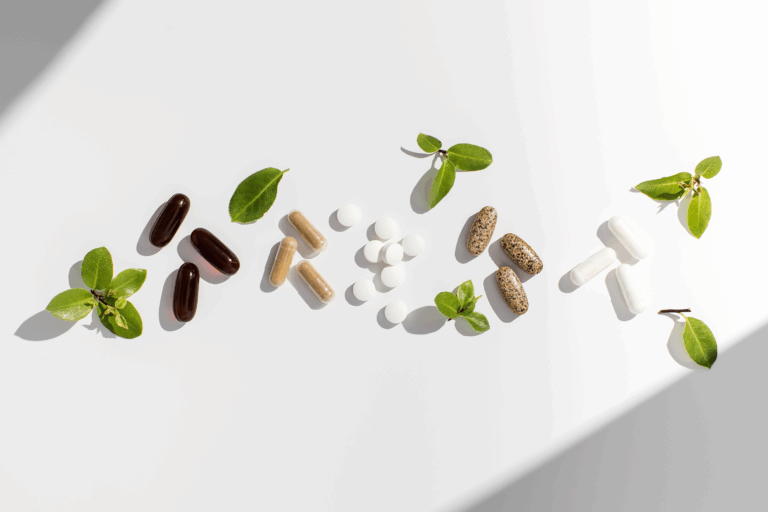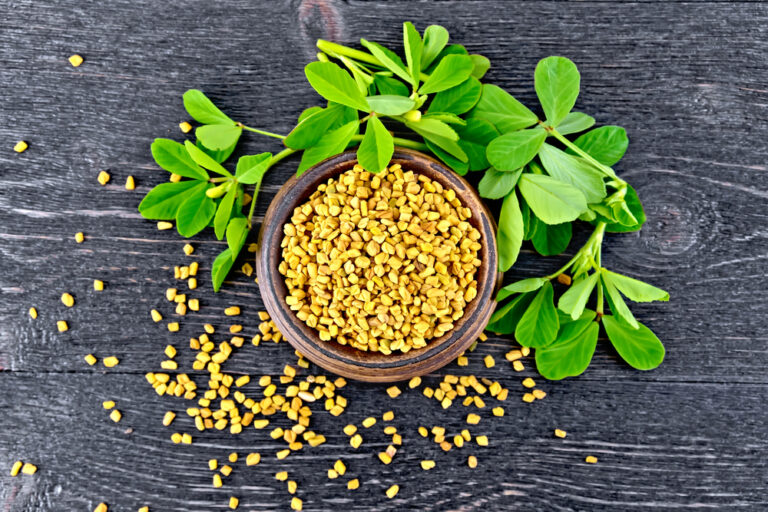Zeolite: Little Rock, Big Energy
Zeolite: Little Rock, Big Energy
Research on Clinoptilolite: Detox, GERD, Hangover, Inflammation, and Oxidative Stress
Zeolites are porous minerals born out of changing temperature and pressure conditions of volcanic rock deep below the surface of the earth. Their relevance in human life comes from their ion exchange capacity, which gives life to useful properties like adsorbence and detoxification, modulation of inflammation, and antioxidant activity.1 There are more than 100 known zeolites, but clinoptilolite is the most widespread type of zeolite and the most common subject of zeolite-related research. Additionally, clinoptilolites have been studied in depth for their in vivo consumption safety profile.13
Zeolite Structure
The key to clinoptilolites’ beneficial applications is its structure: a porous, uniform shape optimal for adsorbing various substances. Sodium, potassium, calcium, and barium ions within clinoptilolites’ pores are attracted to its overall negative charge, and they are quick to swap with other nearby polar molecules and ions, such as lead, ammonia, and nitrates. Water and other polar molecules also within clinoptilolites’ pores filter such molecules that come into contact.1 All of this activity is able to happen without a significant change of structure.
The ion exchange capacity and stability of clinoptilolite depends largely on the ratio of silicon to aluminum within its porous structure.1 Silica, also known as silicon dioxide (SiO2), is usually found in nature as quartz, but in zeolites like clinoptilolite, a higher silica ratio means increased stability under acidic conditions (i.e., the acidic pH of the stomach).2 Zeolites like clinoptilolite are often referred to as “aluminosilicates.”
An important process for the development of clinoptilolites’ beneficial properties is micronization, when clinoptilolites are broken down into small parts.3 During micronization, clinoptilolite’s ions enter an “excited state” characterized by electrons in higher-than-normal energy levels, with surface charge increasing and detoxification capability enhancing toward toxins, radicals, ammonia, and heavy metals.4 Clinoptilolite micronization can fortify the intestinal wall of the GI tract and support antioxidant activity.5
Clinoptilolite in the Scientific Literature
Adsorbent-related clinical impact
Elimination support
Clinoptilolites’ reversible ion exchange (i.e., sodium for ammonia) and subsequent adsorption capacity makes it an optimal candidate for detoxification support. Clinoptilolites were observed in this capacity first reducing lead accumulation in mouse models.1 Drinking water may become contaminated with lead from pipes, faucets, and plumbing fixtures, especially those older than about 35 years. In a 2021 study, purified clinoptilolite successfully reduced lead uptake from contaminated water in a human trial where they labelled and tracked lead exposure in both blood and urine.12 Supplementation with two grams of the purified clinoptilolite brought lead uptake down to an insignificant level. Additionally, clinoptilolites have been studied for their ability to remove ammonia from the environment, especially from drinking water.6,7
GERD and NSAID use
Studies have also been done assessing clinoptilolites’ relevance in a gastroprotective role. A randomized, double-bind, placebo-controlled study consisting of two pilot trials examined clinoptilolites’ potential for relieving symptoms associated with 1) gastroesophageal reflux disease (GERD) and 2) gastric side effects from NSAID medication. Results suggested clinoptilolite might be a candidate for reducing the severity of GERD symptoms such as heartburn, discomfort, and pain and NSAID side effect severity including mucosal erosion and general gastric symptoms.8 Apparent beneficial effects from clinoptilolite on gastric symptoms are proposed to be from clinoptilolite’s hydrogen ion binding as well as binding of bioactive amines and nitrates.8 Gleaned from this study is the potential for clinoptilolite to reduce the dependence on proton-pump inhibitors (PPIs) for GERD, which have their own associated complications.
Alcohol overindulgence
Unpleasant symptoms associated with the hours after an overindulgence in alcohol (veisalgia, “hangover”) arise as a consequence of elevated blood alcohol levels that result from excessive consumption of alcoholic beverages, which contain various amounts of ethanol. When the liver fails to metabolize and detoxify ethanol quickly enough, ethanol enters the blood and has access to tissues all over the body. A study highlighted clinoptilolite’s capacity to support the reduction of hangover symptoms (most significantly GI upset, but headache, light sensitivity, lethargy, dysphoria, and thirst were also investigated) by adsorbing ethanol molecules in its pores.10 Thus, clinoptilolite could target ethanol molecules before they were absorbed in the small intestine and sent to the liver for metabolism via alcohol dehydrogenase. This leads to lower blood alcohol concentration or at least slower absorption of ethanol – having largely the same effect as consuming alcohol with a meal versus consuming it on an empty stomach. Ultimately, clinoptilolite’s downstream effects could result in reducing the severity of hangover symptoms essentially stemming from high blood alcohol levels.10,11 Additionally, the study found that clinoptilolite could also absorb bioactive amines, in this case histamine – levels of which are known to increase after excessive alcohol consumption and contribute to hangover-associated headaches.10
Modulation of inflammation
Inflammation is a normal homeostatic process in the body with various cells and signals involved in its initiation and resolution. Inflammation only becomes a problem that needs solving when it does not resolve when the event that triggered inflammation in the first place has concluded or dissipated. Immunomodulatory substances support the healthy resolution of inflammation, keeping the body balanced in homeostasis.
Clinoptilolites’ connections to immunomodulation revolve around various interactions with the immune system. For example, research shows that clinoptilolite may interact with M cells of the mucosa-associated lymphoid tissue (MALT) and the gut-associated lymphoid tissue (GALT) – sites of intestinal cell-mediated inflammatory response modulation.1 Additionally, clinoptilolite has been studied for its association with increases of the production of B cells and immunoglobulin A (IgA).8 B cells are important for producing antibodies, while IgA is needed for the regulation of the immune response to the gut microbiota.
Antioxidant activity
Oxidative stress occurs when excessive oxidation occurs, oxidation being the chemical process of electron loss from an element or molecule – ultimately resulting in the formation of free radicals that “steal” electrons from other molecules in important cells and tissues. Antioxidants may reduce or prevent oxidative stress altogether, donating electrons to free radicals so theft isn’t necessary. Many vitamins, like vitamin C and vitamin E, are known to have antioxidant activity. Clinoptilolites’ antioxidant activities have been associated with their ability to use the metal ions within their pores as cofactors for the activation of antioxidant enzymes.1
- Mastinu, A., Kumar, A., Maccarinelli, G., Bonini, S. A., Premoli, M., Aria, F., Gianoncelli, A., & Memo, M. (2019). Zeolite Clinoptilolite: Therapeutic Virtues of an Ancient Mineral. Molecules (Basel, Switzerland), 24(8), 1517. https://doi.org/10.3390/molecules24081517
- Benning L.G., Wilkin R.T., Barnes H.L. (200). Solubility and stability of zeolites in aqueous solution: II. Calcic clinoptilolite and mordenite. Am. Miner, 85:495–508. doi: 10.2138/am-2000-0411
- Zarkovic, N., Zarkovic, K., Kralj, M., Borovic, S., Sabolovic, S., Blazi, M. P., Cipak, A., & Pavelic, K. (2003). Anticancer and antioxidative effects of micronized zeolite clinoptilolite. Anticancer research, 23(2B), 1589–1595.
- Kraljević Pavelić, S., Simović Medica, J., Gumbarević, D., Filošević, A., Pržulj, N., & Pavelić, K. (2018). Critical Review on Zeolite Clinoptilolite Safety and Medical Applications in vivo. Frontiers in pharmacology, 9, 1350. https://doi.org/10.3389/fphar.2018.01350
- Lamprecht, M., Bogner, S., Steinbauer, K., Schuetz, B., Greilberger, J. F., Leber, B., Wagner, B., Zinser, E., Petek, T., Wallner-Liebmann, S., Oberwinkler, T., Bachl, N., & Schippinger, G. (2015). Effects of zeolite supplementation on parameters of intestinal barrier integrity, inflammation, redoxbiology and performance in aerobically trained subjects. Journal of the International Society of Sports Nutrition, 12, 40. https://doi.org/10.1186/s12970-015-0101-z
- Margeta K., Zabukovec N., Siljeg M., Farkas A. (2013). Natural Zeolites in Water Treatment—How Effective is Their Use. In: Elshorbagy W., Chowdhury R., editors. Water Treatment. Volume 5. IntechOpen; London, UK. 81–112
- Genuis, S. J., Birkholz, D., Ralitsch, M., & Thibault, N. (2010). Human detoxification of perfluorinated compounds. Public health, 124(7), 367–375. https://doi.org/10.1016/j.puhe.2010.03.002
- Sabbioni, A., Ferrario, C., Milani, C., Mancabelli, L., Riccardi, E., Di Ianni, F., Beretti, V., Superchi, P., & Ossiprandi, M. C. (2016). Modulation of the Bifidobacterial Communities of the Dog Microbiota by Zeolite. Frontiers in microbiology, 7, 1491. https://doi.org/10.3389/fmicb.2016.01491
- Potgieter, W., Samuels, C. S., & Snyman, J. R. (2014). Potentiated clinoptilolite: artificially enhanced aluminosilicate reduces symptoms associated with endoscopically negative gastroesophageal reflux disease and nonsteroidal anti-inflammatory drug induced gastritis. Clinical and experimental gastroenterology, 7, 215–220. https://doi.org/10.2147/CEG.S51222
- Gandy, J. J., Laurens, I., & Snyman, J. R. (2015). Potentiated clinoptilolite reduces signs and symptoms associated with veisalgia. Clinical and experimental gastroenterology, 8, 271–277. https://doi.org/10.2147/CEG.S81929
- Federico, A., Dallio, M., Gravina, A. G., Iannotta, C., Romano, M., Rossetti, G., Somalvico, F., Tuccillo, C., & Loguercio, C. (2015). A pilot study on the ability of clinoptilolite to absorb ethanol in vivo in healthy drinkers: effect of gender. Journal of physiology and pharmacology : an official journal of the Polish Physiological Society, 66(3), 441–447.
- Samekova, K., Firbas, C., Irrgeher, J. et al. (2021). Concomitant oral intake of purified clinoptilolite tuff (G-PUR) reduces enteral lead uptake in healthy humans. Sci Rep, 11, 14796. https://doi.org/10.1038/s41598-021-94245-x
- Kraljević Pavelić, S., Simović Medica, J., Gumbarević, D., Filošević, A., Pržulj, N., & Pavelić, K. (2018). Critical Review on Zeolite Clinoptilolite Safety and Medical Applications in vivo. Frontiers in pharmacology, 9, 1350. https://doi.org/10.3389/fphar.2018.01350







